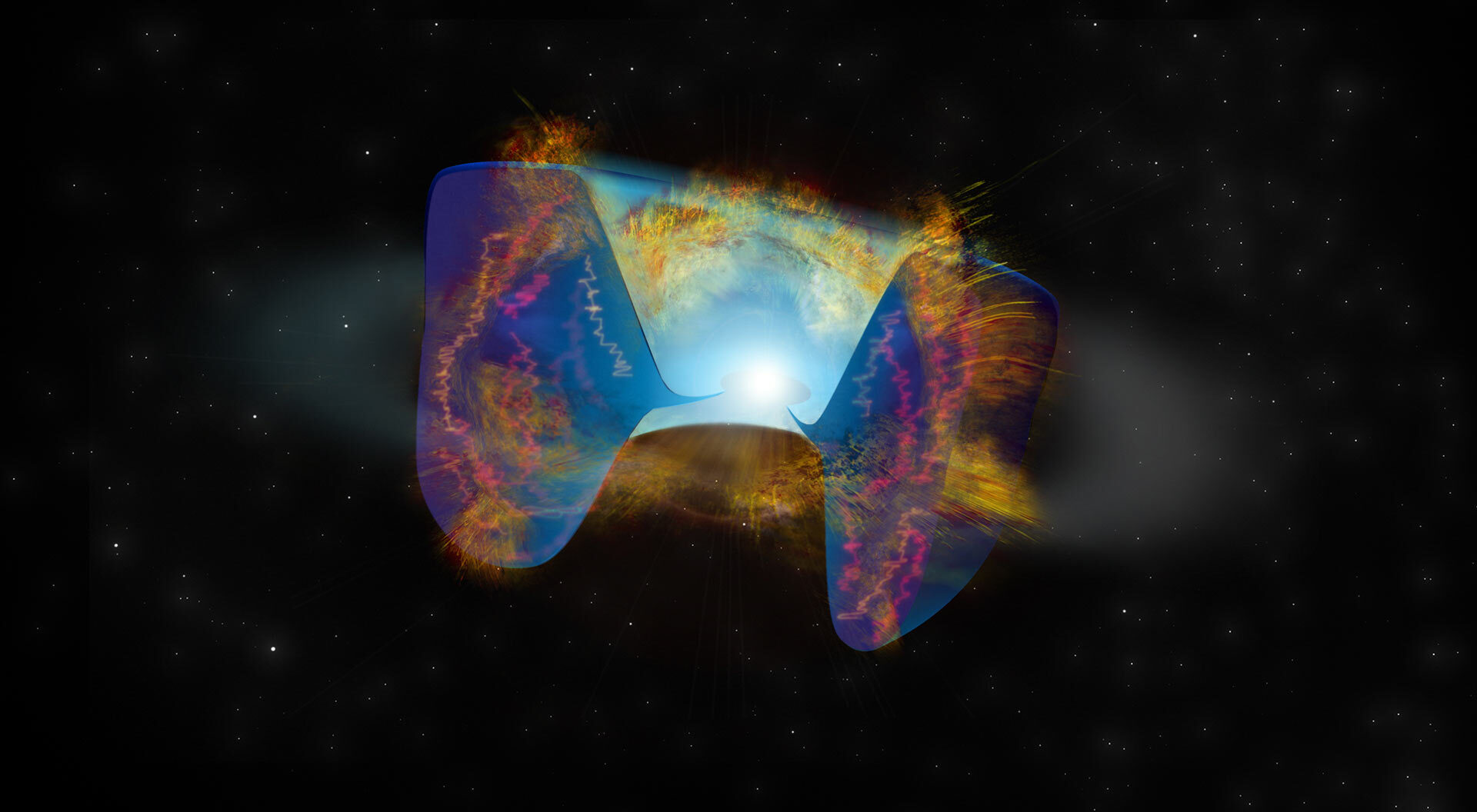
"Theorists had predicted that this could happen, but this is the first time we've actually seen such an event," said Dillon Dong, a graduate student at Caltech.
Dong and colleagues first detected radio emission from VT 1210+4956 in VLASS data.
They then observed the system using NSF's Karl G. Jansky Very Large Array (VLA) and the Keck telescope at the W.M. Keck Observatory.
They determined that the bright radio emission was coming from the outskirts of a dwarf starburst galaxy some 480 million light-years from Earth.
They later found that the Monitor of All-sky X-ray Image (MAXI) instrument aboard the International Space Station (ISS) had detected a burst of X-rays coming from the object in 2014.
The data from all these observations allowed the astronomers to piece together the fascinating history of a centuries-long dance between two massive stars.
Like most stars that are much more massive than our Sun, these two were born as a binary pair, closely orbiting each other.
Comment: As is believed to be the case with our own star, the Sun: Enigmatic ancient brown dwarf discovered in solar neighborhood suggests more 'accidents' may be lurking in our galaxy - NASA
One of them was more massive than the other and evolved through its normal, nuclear fusion-powered lifetime more quickly and exploded as a supernova, leaving behind either a black hole or a neutron star.
The compact object's orbit grew steadily closer to its companion, and about 300 years ago it entered the companion's atmosphere.
At this point, the interaction began spraying gas away from the companion into space.
The ejected gas, spiraling outward, formed an expanding, donut-shaped ring, called a torus, around the pair.
Eventually, the compact object made its way inward to the companion star's core, disrupting the nuclear fusion producing the energy that kept the core from collapsing of its own gravity.
As the core collapsed, it briefly formed a disk of material closely orbiting the intruder and propelled a jet of material outward from the disk at speeds approaching that of light, drilling its way through the star.
"That jet is what produced the X-rays seen by the MAXI instrument aboard the ISS, and this confirms the date of this event in 2014," Dong said.
The collapse of the star's core caused it to explode as a supernova, following its sibling's earlier explosion.
"The companion star was going to explode eventually, but this merger accelerated the process," Dong said.
The material ejected by the 2014 supernova explosion moved much faster than the material thrown off earlier from the companion star, and by the time VLASS observed the object, the supernova blast was colliding with that material, causing powerful shocks that produced the bright radio emission seen by the VLA.
"All the pieces of this puzzle fit together to tell this amazing story," said Dr. Gregg Hallinan, also from Caltech.
"The remnant of a star that exploded a long time ago plunged into its companion, causing it, too, to explode."
The findings appear today in the journal Science.
D.Z. Dong et al. 2021. A transient radio source consistent with a merger-triggered core collapse supernova. Science 373 (6559): 1125-1129; doi: 10.1126/science.abg6037



Sarcasm!
R.C.